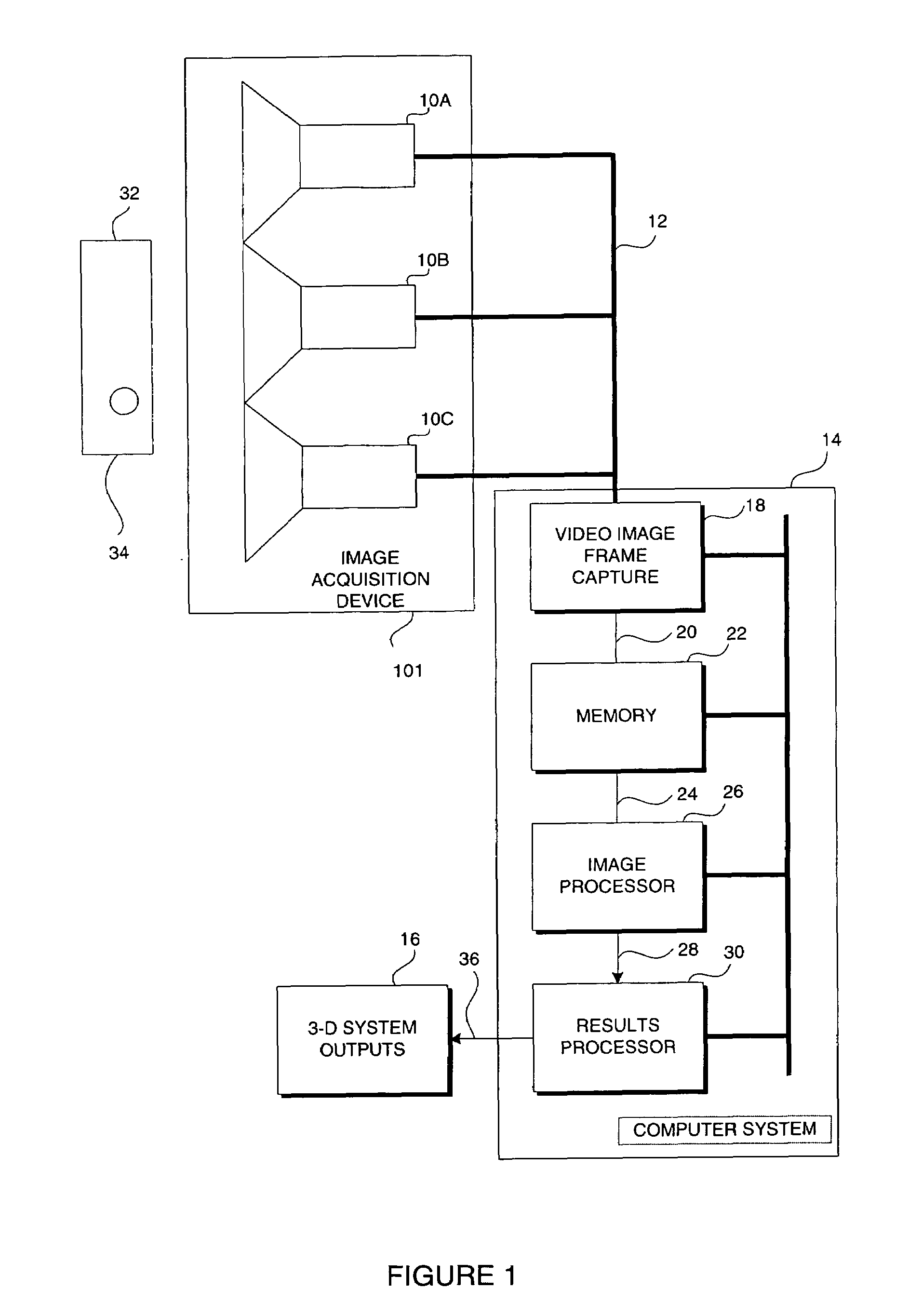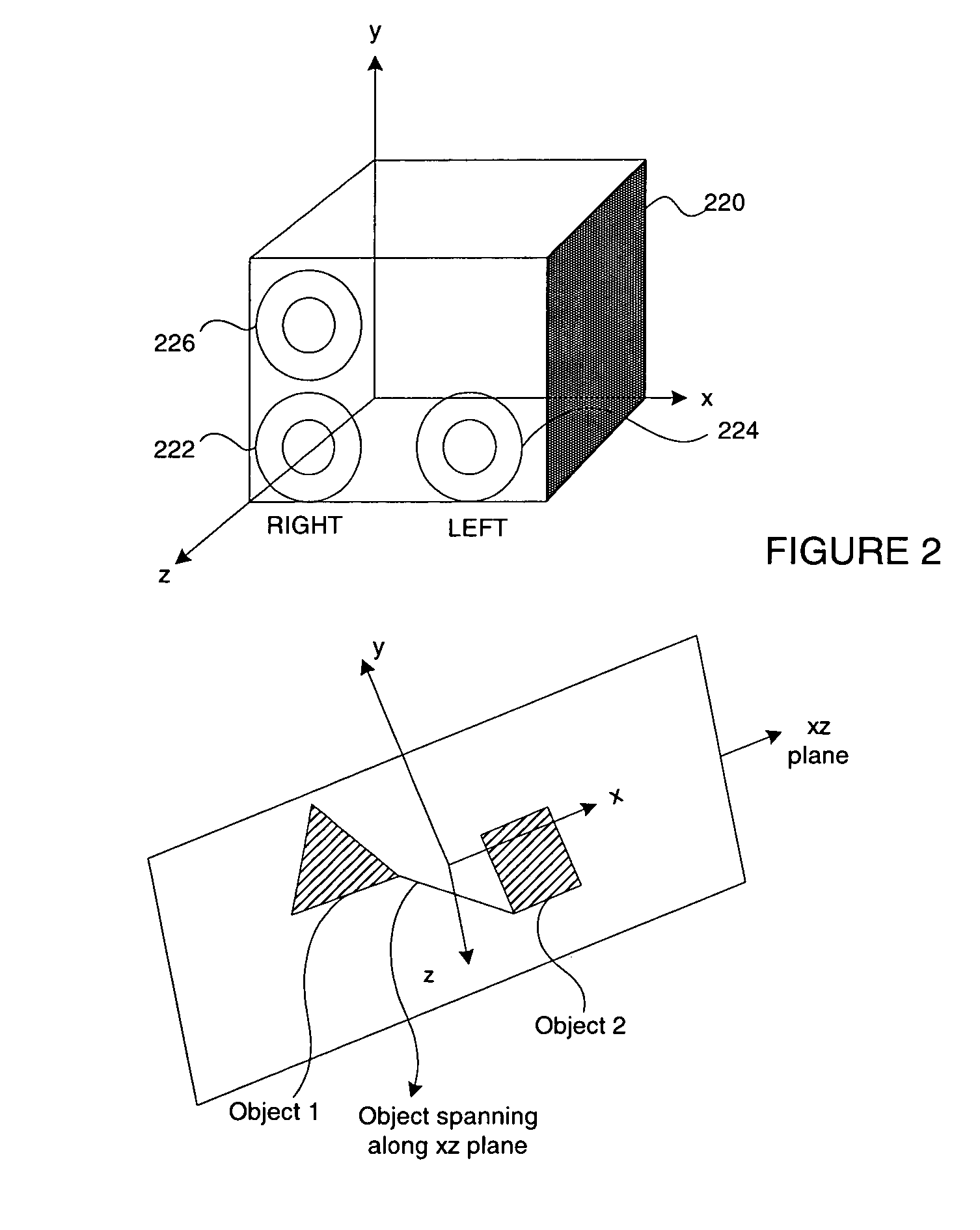Method and apparatus for three-dimensional object segmentation
a three-dimensional object and segmentation technology, applied in the field of automatic vision systems, can solve the problems of increasing the speed or increasing the cost of automated systems, reducing the robustness of prior methods, and computationally intensive 3-d segmentation, and achieves the effects of less susceptible to false images, high accuracy, and robustness
- Summary
- Abstract
- Description
- Claims
- Application Information
AI Technical Summary
Benefits of technology
Problems solved by technology
Method used
Image
Examples
Embodiment Construction
[0018]A vision system implemented in an illustrative embodiment according to the invention is illustrated in FIG. 1. The system acquires an image set from at least three cameras, performs edge processing for each independent image, performs stereoscopic correspondence and matching for pairs of images, merges the sets of stereoscopic data, performs 3-D computations based upon known camera geometry to determine 3-D features, and then clusters 3-D points into distinct objects.
[0019]The illustrative embodiment incorporates an image acquisition device 101, comprising at least three cameras 10a, 10b, 10c such as the Triclops model available from Point Grey Research, Vancouver B.C. The cameras 10 send a video signal via signal cables 12 to a video processor 14. The three cameras are each focused on a scene 32 to be processed for objects. The video processor 14 includes a video image frame capture device 18, image processor 26, and results processor 30; all of which are connected to a memor...
PUM
 Login to View More
Login to View More Abstract
Description
Claims
Application Information
 Login to View More
Login to View More - R&D
- Intellectual Property
- Life Sciences
- Materials
- Tech Scout
- Unparalleled Data Quality
- Higher Quality Content
- 60% Fewer Hallucinations
Browse by: Latest US Patents, China's latest patents, Technical Efficacy Thesaurus, Application Domain, Technology Topic, Popular Technical Reports.
© 2025 PatSnap. All rights reserved.Legal|Privacy policy|Modern Slavery Act Transparency Statement|Sitemap|About US| Contact US: help@patsnap.com



